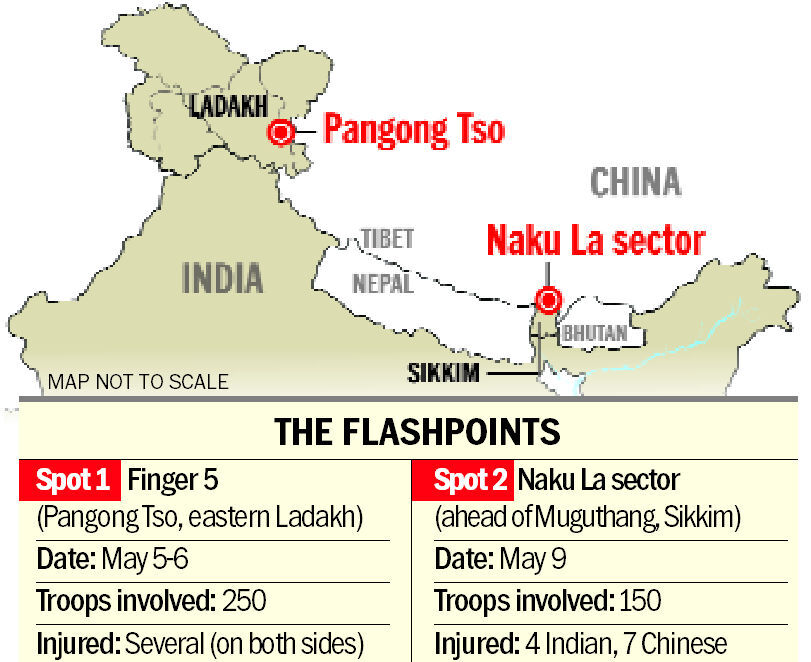On Sunday, details emerged about skirmishes that took place last week between Indian and Chinese troops that led to the injuries of several soldiers on both sides. The first incident reportedly occurred at Pangong Tso lake in Eastern Ladakh on 5 May, while the second took place at the Naku La pass in Northern Sikkim on 9 May.
Border tensions between India and neighbouring China flared up again when several troops engaged in stone-pelting and fistfights in the aforementioned regions. The Sikkim situation has been “resolved”, and Army sources have stated that official “disengagement” has taken place near the northern banks of the Pangong Tso lake in Ladakh.
According to Army sources, the violence in Ladakh began as an argument that escalated to a brawl when Chinese troops objected to the presence of their Indian counterparts in the disputed lake area. China controls two-thirds of the area. India’s Northern Army Command chief reportedly visited the spot after he had been apprised of the skirmish, and has deployed additional troops as a precautionary measure, but ruled out further escalation for now.
On the other hand, the incident in North Sikkim occurred after a patrol party of China’s People’s Liberation Army (PLA) personnel was stopped. The intense stand-off was resolved when officers at the local Command level intervened.

The neighbouring powers have had clashing perceptions of their undemarcated boundaries, which have led to many such face-offs over the years, most recently 2017’s Operation Juniper at Doklam. Forces from both sides patrol the areas that they claim along their shared 3,448-km Line of Actual Control (LAC)–China also claims Arunachal Pradesh as its own territory and a part of southern Tibet, while India rejects this notion. Both sides have asserted that while the final resolution of these boundary issues is pending, it is necessary to maintain peace and security in border zones.
At the same time, scuffles have broken out at Pangong Tso in 2017 and 2019. In August 2017, a video surfaced that showed hundreds of soldiers pelting stones at each other in the area. In September 2019, a similar scuffle broke out among the patrol teams of both countries, which was resolved in a few hours by a delegation-level meeting in Chushul. That incident occurred just a few weeks before Chinese President Xi Jinping was to arrive for an informal summit with Indian Prime Minister Narendra Modi at Mamallapuram.
The 73-day Doklam impasse was ended when the two leaders discussed settling their border differences at the lowest level at the April 2018 Wuhan summit. They agreed to strengthen “strategic guidance” to their militaries so that they can build trust and understanding. In Mamallapuram in October 2019, Modi and Xi reiterated their focus on further broadening bilateral ties.
Image Source: The Print

